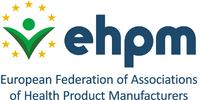Maximum permitted levels (MPLs) of vitamins and minerals are required to be set by the Directive on Food Supplements, and by the Regulation governing the addition of nutrients to foods. The European Commission recently resumed its work on setting MPLs and intends to finalise it by the end of its current mandate. For food supplement businesses, this will ease access throughout the Single Market. For consumers, it will offer more choice and greater confidence in the safety of their food.
Dietary population surveys in Europe show there is a need for supplementation. These studies show that, while western populations tend to overly consume macronutrients (carbohydrates, fats, proteins), some population groups simply do not consume enough micronutrients (vitamins and minerals) to maintain a healthy lifestyle.
Recital 3 of the Food Supplement Directive 2002/46/EC highlights that although “an adequate and varied diet could under normal circumstances provide all the necessary nutrients for the maintenance of a healthy life, surveys show that this ideal situation is not being achieved for all nutrients and by all groups of the population across the community”. In light of this, several national authorities recommend that some people take up some form of supplementation.
As there is clearly a need for supplementation, we also need to ensure that maximum levels are set using accepted scientific assessment of safety, so that consumers can take as informed decisions as possible.
“Studies show that, while western populations tend to overly consume macronutrients (carbohydrates, fats, proteins), some simply do not consume enough micronutrients (vitamins and minerals) to maintain a healthy lifestyle”
A first attempt to set MPLs in the mid-2000s was fraught with scientific and technical challenges. In the absence of harmonised levels, many Member States have developed their own national solutions, and this is impeding the market.
As an independent scientific and regulatory consultant, I have worked with the European Federation of Associations of Health Product Manufacturers (EHPM) to propose a workable solution for food supplements. As a European organisation representing the food supplement sector, EHPM proactively and constructively engages with the EU Institutions to contribute to the development of a fairer European regulatory framework for the sector. This work has been developed with technical experts from EHPM’s Regulatory & Quality Working Group and with the EHPM Board.
Key parameters for setting MPLs are the upper safe intake level for a vitamin or mineral from all sources (as set by EFSA), and the usual intake from the diet. Where possible, intake is subtracted from the upper safe level to determine the “space” available in people’s diets for supplements. Challenges include gaps in the dietary intake data across Europe, determining which is the best data to use, as well as gaps in the upper safe level data.
How to set MPLs for food supplements and for fortified foods (foods with added nutrients) is another dilemma. Recent in-depth academic analysis has given new insight to setting MPLs. For example, analysis of Irish food intake data has confirmed that the MPLs for fortified foods and supplements can be set separately, each taking into account intake from other dietary sources.
The EHPM model proposes a solution for setting maximum and minimum amounts in food supplements that are safe for consumers, are based on a robust scientific approach, and allow consumers to take more informed dietary decisions. It also gives consumers more choice and continued benefits once harmonised MPLs are set. The model also proposes a solution for children’s supplements.
EHPM’s proposed MPLs are based on the EU’s upper safe levels as a priority, using the most recent dietary intake data from countries with mature markets for fortified foods and food supplements. Where food fortification with particular nutrients may increase in the future, such as vitamin D, this is accounted for. This approach is supported by evidence that the trend for intakes of micronutrients is generally downwards over time.
An analysis of Irish dietary intakes, where the market for fortified foods and food supplements is mature, has shown that current intakes of even high consumers, do not exceed the upper safe intakes. This shows that levels should be set according to the risks and not be made too restrictive for consumers.
“The EHPM model proposes a solution for setting maximum and minimum amounts in food supplements that are safe for consumers, based on a robust scientific approach, and allow them to take more informed dietary decisions”
The Food Supplements Directive states that the ideal situation where a varied diet should provide recommended amounts of nutrients is not always achieved. It also recognises that consumers with particular lifestyles or for their own reasons may choose to increase their intake of some nutrients with food supplements. To ensure a high level of protection and to facilitate such choices, products must be safe and appropriately labelled.
In specific cases, the EHPM model proposes a range of MPLs supported by consumer information. This includes supplements taken for short periods of time, where the effects of excess are mild and transient, or where higher intakes are contraindicated. Labelling ensures consumer safety is addressed as a priority and enables health professionals to better advise consumers.
The projected timeline for completion of the Commission’s work is the end of 2024. Compromise will be necessary to bridge differences between Member States’ current positions and may require some changes in perception to recognise the important role food supplements play in helping people live healthier lives.
Click here to read EHPM's Proposal for Maximum and Minimum Levels for Vitamins and Minerals

Brought to you by EHPM
This article reflects the views of the author and not the views of The Parliament Magazine or of the Dods Group
Sign up to The Parliament's weekly newsletter
Every Friday our editorial team goes behind the headlines to offer insight and analysis on the key stories driving the EU agenda. Subscribe for free here.